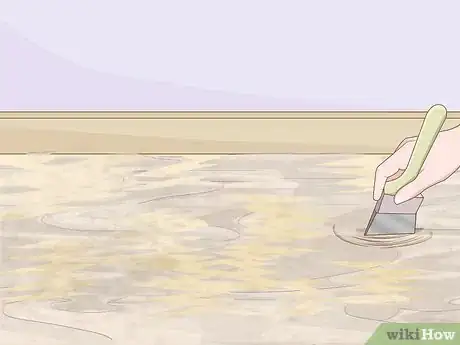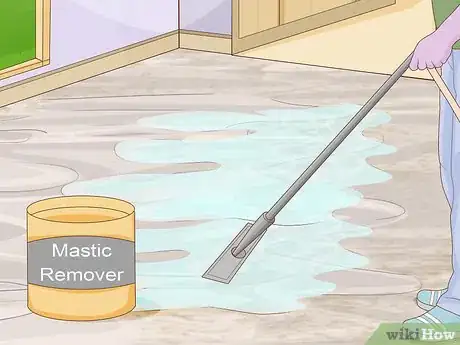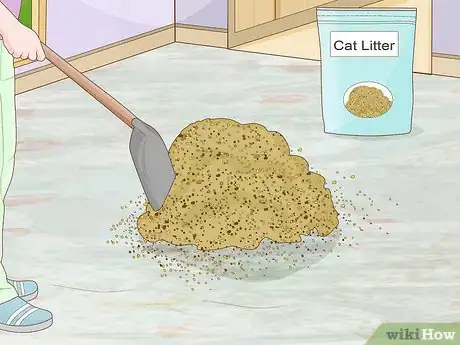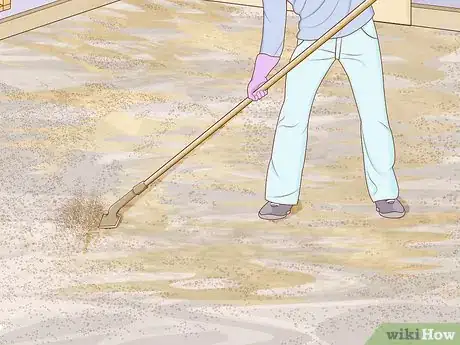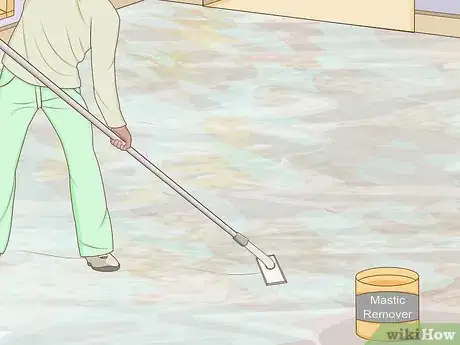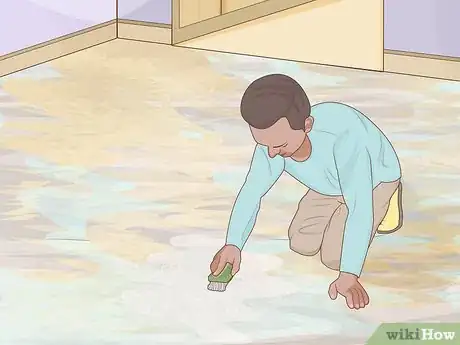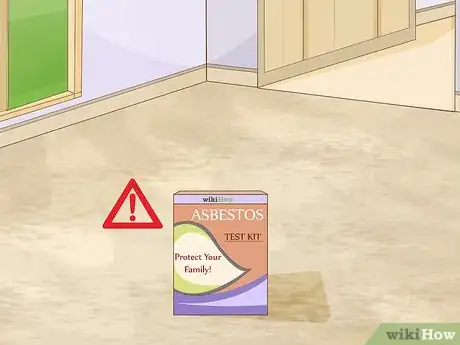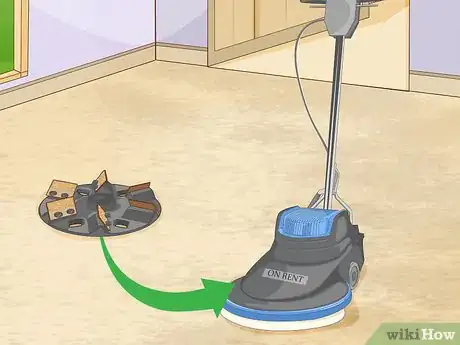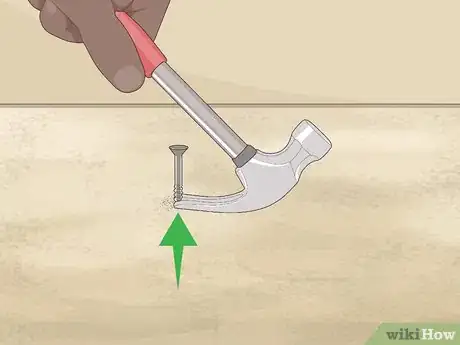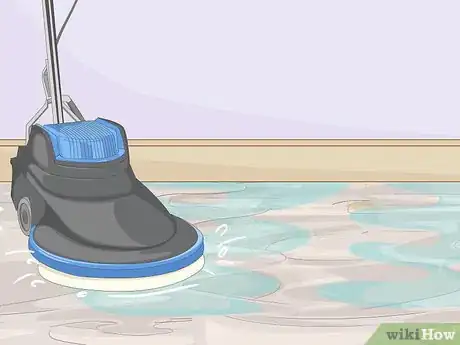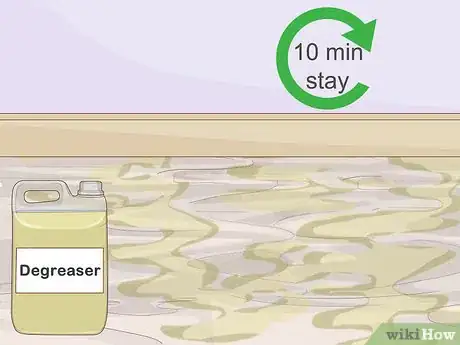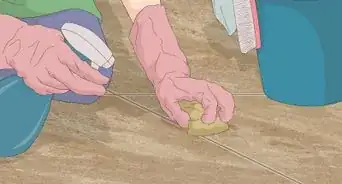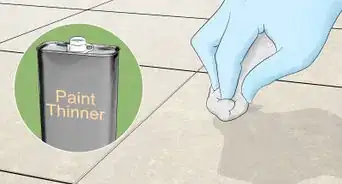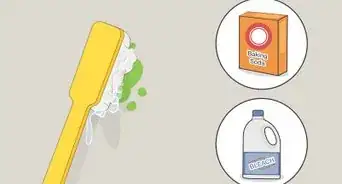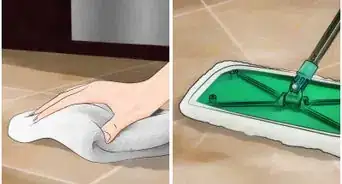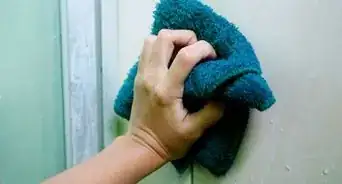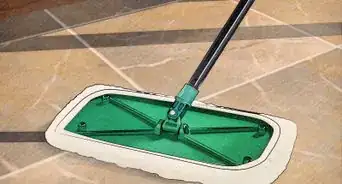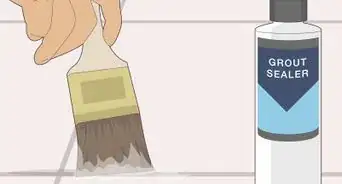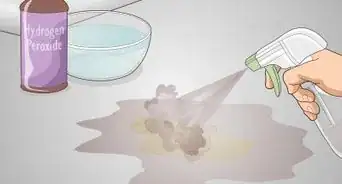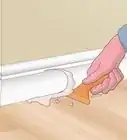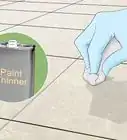wikiHow is a “wiki,” similar to Wikipedia, which means that many of our articles are co-written by multiple authors. To create this article, 15 people, some anonymous, worked to edit and improve it over time.
This article has been viewed 133,363 times.
Learn more...
Mastic is a resin-based adhesive that is used to set tile and other substances. There is no fast way to remove mastic, but elbow grease or chemical removers will do the job. Be aware that old mastic often contains asbestos.
Things You Should Know
- To remove mastic without chemicals, try hot water, chiseling, or heat guns.
- In a well-ventilated room, layer mastic remover and, when it dissolves, add another layer to be wiped up with rags.
- Or, push a rotary floor machine around the area after applying a mastic removal block.
Steps
Chemical-Free Removal
-
1Soak the mastic in hot water. This will only work on some types of mastic, usually in recent homes. It's worth trying first, as wetting the mastic can make other methods safer. You should notice the mastic loosening within 20 to 60 minutes.[1]
- Mix the hot water with vinegar or citrus degreaser for extra strength.
- Old, black mastic may contain asbestos. Keep it wet at all times during removal, to prevent dangerous dust.
-
2Chisel the mastic off. Once the mastic is wet, try to break it off with a hammer and chisel. If it's soft, scrape it off with a wide putty knife.
- Use a long-handled edge scraper on floors to save bending over.
Advertisement -
3
Using Chemical Solvents
-
1Purchase mastic remover. This is available online or at hardware stores, but may cost over $100 per 5-gallon (19L) bucket. Products made from citrus or acetic acid are safer than other mastic removers.
- If you are removing mastic from wood sub-floor, look for a product that is designed for use on wood. Overuse of removal chemicals can make it difficult to bond future flooring.
-
2Open all of your windows and doors. Use as much ventilation as possible. Limit your time in the area while the chemical reaction takes place.
- Check the label of your chemical for more safety instructions. Some products may recommend a face mask.
-
3Apply a thin layer of mastic remover. Load the mastic remover into a sprayer if possible, or apply it to the top of the mastic with a mop. If you are applying it to mastic that is above wood flooring, use rags instead.
- Start at the far end of the room and work back to the door. Clean your footwear whenever you leave the area.
-
4Wait for the mastic to dissolve. Wait for the amount of time suggested by the product’s instructions. This can take anywhere from 1 to 12 hours, depending on the product and mastic.
-
5Cover with cat litter (optional). This will absorb the liquid and make cleanup easier.[4]
-
6Scrape up the mastic. Wear gloves and scrape up any stuck-on mastic. You can use a razor scraper or putty knife. Place by-products in a bucket for disposal at a hazardous waste facility.
- You can instead use a floor machine equipped with a 3M black scrubbing pad, with a speed no higher than 175 rpm. Using a different setup or letting the floor dry may expose you to asbestos.
-
7Repeat with another thin layer. Apply another thin layer of remover to remove the remaining residue. Agitate the area with a mop or bristled broom.
-
8Wipe up the liquid with rags or other absorbent materials. Dispose of them with the other hazardous adhesive and waste.
- For large areas, rent a wet vacuum instead.
-
9Clean the area. Clean the floor with an industrial cleaner or soapy water. Let dry completely before laying down new material.
Using a Floor Machine
-
1Test for asbestos. Old, black mastic can contain asbestos, which causes illness or death when inhaled. Using tools to break up the mastic send the asbestos fibers into the air, which makes it more dangerous than the chemical method above. Find testing professionals in the US at the EPA website.
- If asbestos is present, this method is not recommended, and may violate workplace safety regulations. Consider hiring a professional, or use the chemical method above.
-
2Wear safety equipment. Even if there is no asbestos, you should protect yourself from debris. Wear safety glasses, a paper mask, and work gloves.
- If asbestos is present, this method is not recommended. If you continue anyway, use a tight-fitting respirator mask, safety goggles, and disposable rubber gloves. Wear old clothing, and throw it away at the end of the project. Turn off all air circulation to the rest of the building.
-
3Rent a rotary floor machine. This should be available from any tool rental service. This is also called a floor buffer.
- A floor grinder will work instead, with no mastic removal block required. Ask the rental service about its effect on wooden surfaces if necessary.
-
4Attach a mastic removal block. This is a round base that attaches to your floor machine. It should have several blades at the base, to cut the mastic.[5]
- This is typically safe for hardwood floors, but check with the tool rental service.[6]
- You can also use a base intended to remove thinset from concrete. Avoid titanium blocks, which may melt the mastic and make removal messy.
-
5Remove nails from the floor. Nails, screws, and staples can damage the equipment.[7] Remove these from the floor using a claw hammer.
-
6Wet the floor (optional). Lightly water the mastic. This will keep the dust cloud to a minimum.
- Avoid electrical hazards with a ground fault circuit interrupter. This will cut off the circuit rapidly if water causes an electrical short.
-
7Move the machine over the floor. Plug in and turn on the machine. Push it over the mastic. Move slowly, and cover each area several times. You'll typically finish about 100 square feet (9.3 square meters) per hour.
- Stop periodically and sweep up the broken mastic. This will make it easier to see where mastic remains.
-
8Apply a degreaser. The machine should remove almost all of the mastic. Mop a degreasing solution over anything left. Let sit 10 minutes or according to the label.[8]
- If you are cleaning a hardwood floor, check the degreaser label before buying. Some products may damage wood.
-
9Scrub or scrape the floor. Put a scrubbing brush or stripping pad on the floor machine. Turn it on and move it over the last pieces of mastic.
- Alternatively, scrape it up using a putty knife.
-
10Clean with a wet vacuum. Rent a wet vacuum with a front-attached squeegee to vacuum up the broken mastic. Once finished, mop the floor with soapy water and use the wet vac again.
Community Q&A
-
QuestionIf there is any old mastic left, will the new mastic bond?
 Community AnswerYes, it doesn't have to be perfectly clean. You mostly want everything to be as flat as possible.
Community AnswerYes, it doesn't have to be perfectly clean. You mostly want everything to be as flat as possible. -
QuestionWill the floor machine method work on plywood or will it just tear up the plywood?
 Community AnswerIt can be a little touch and go with plywood, but it won't rip out large chunks of plywood, just the topmost layer here and there.
Community AnswerIt can be a little touch and go with plywood, but it won't rip out large chunks of plywood, just the topmost layer here and there. -
QuestionWhat is the best way to remove mastic from an entire wall of sheetrock?
 Community AnswerIt would be faster and better to just remove and replace the drywall. That works every time.
Community AnswerIt would be faster and better to just remove and replace the drywall. That works every time.
Things You'll Need
- Hot water
- Gloves
- Ventilation mask
- Vinegar or citrus degreaser (optional)
- Hammer and chisel, putty knife, or floor machine
- Mop or sprayer
- Mastic remover
- Rags or shop vac
If using a floor machine:
- Professional asbestos tester
- Floor machine
- Mastic removal block
- Floor machine scrubbing brush or a putty knife
- Wet vac
- Gloves
- Dust mask
- Safety glasses
- Degreaser
- Mop
- Broom
References
- ↑ http://www.oldhousejournal.com/magazine/2001/march_april/REmoving_lin_adhesive/index.shtml
- ↑ http://www.oldhousejournal.com/magazine/2001/march_april/REmoving_lin_adhesive/index.shtml
- ↑ http://www.doityourself.com/forum/walls-ceilings/228486-removing-tile-mastic-plaster-wall.html
- ↑ https://www.youtube.com/watch?v=FviV7XWHj6s
- ↑ http://www.parish-supply.com/mastic-removal.aspx
- ↑ https://www.youtube.com/watch?v=8z-U2pmJi4s
- ↑ https://www.youtube.com/watch?v=8z-U2pmJi4s
- ↑ http://www.parish-supply.com/mastic-removal.aspx
About This Article
If you want to remove mastic, wet it with a mixture of hot water and vinegar before leaving it to soften for 20-60 minutes. Then, scrape away the mastic with a chisel or an edge scraper. Alternatively, if you'd rather use a heat gun, be sure to wear heat resistant gloves as mastic is flammable. Additionally, you should only use the heat gun on an area for a few seconds before scraping the mastic away with a putty knife. For tips on how to remove mastic with chemicals or a floor machine, keep reading!

